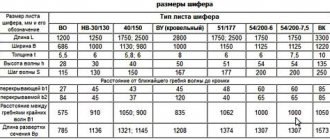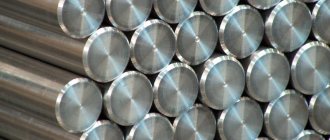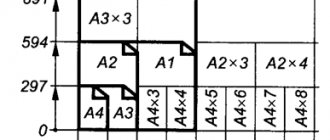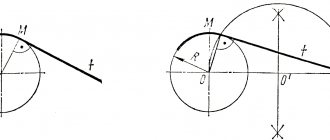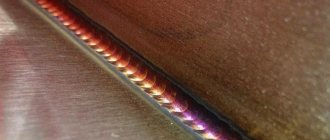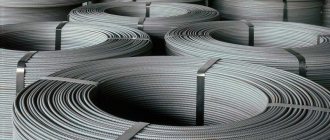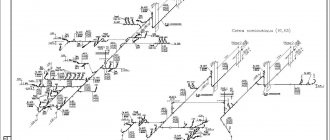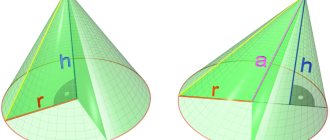Asset -
an item of property that is part of an investor's income-producing property or the total property of a business firm.
Types of assets
Bank deposit
. The easiest and most reliable way to save money is to open a bank account. There are state and commercial banks. State ones are more reliable. Commercial ones are interesting due to their higher percentage of profitability. Every bank has different types of deposits. Main advantages: reliability, ability to quickly withdraw funds. Disadvantages: low income. Only by taking into account compound interest and not withdrawing money earlier than the agreed period will you save money from inflation. But it’s difficult to call it an asset (what brings money).
Mutual investment funds (UIF)
. Many people know that they can make money in the stock market and are willing to invest part of their capital, but they do not know how to buy and sell securities and when to do it in order to make a profit. This is where mutual funds come to the rescue, in which, with a skillful approach, you can significantly increase your capital. And most importantly, you can start investing with only 1,000 rubles (this is a collective investment market - everyone gets a little - in the end, a decent amount for investing in the market), shares can be bought by anyone. Next, the Management Company (MC) begins to work, which buys securities with investors’ money, with the expectation of their growth. Main advantages: small starting capital, full control by government agencies (openness), quick withdrawal of funds (“open” mutual fund). Disadvantages: The mutual fund is obliged to buy shares with investors' money even when it is obvious that this will lead to losses. That is, during a crisis, when the market as a whole is going down, most mutual funds will show negative returns (or very low). This will have a particularly negative impact on “closed” mutual funds. The loss will have to be endured.
Hedge funds
. These are collective investment funds that place investors' money in foreign markets, carrying out all the research and analytical activities for them. At the same time, the funds provide a certain percentage of return regardless of market fluctuations. This type of fund, unlike mutual funds, has much more opportunities for increasing capital. For example, a market collapse began. Mutual funds are forced to lose their funds, while hedge funds, on the contrary, increase investors’ capital even faster, making money on a decline (hedges can “short”). Flaws. Firstly, hedge funds are located outside the Russian state, simply put, in offshore areas (due to this, preferential taxation). Secondly, to start investing in such a fund you need to have a lot of money (annual income of at least $200,000 or net assets of more than $1,000,000). Plus restrictions - no more than 100 people (organizations) in one fund.
Real estate
. Real estate is one of the least risky areas of investment. The real estate market reacts much more slowly to currency fluctuations and economic crises. There are 3 ways to invest using real estate. The first is to buy cheaper, sell more expensive. The second is to buy forever and make a profit from renting it out (passive income). The third is the purchase not of the real estate itself, but of a share in a real estate fund. In turn, it can be residential (ordinary apartments) or commercial (offices, warehouses). Advantages: reliability (even during a crisis, real estate does not lose much in value and then returns to its position). You cannot completely lose your capital on real estate - it will always cost something (unlike shares, businesses, etc.) and, as a rule, it gets more and more expensive every year (inflation does not affect real estate). Thus, correctly chosen real estate is a passive income, which in 10-15 years - shorter for Russia, Europe and the USA - fully pays off the investment made in it. In this case, the principal amount (real estate value) is likely to increase significantly, rather than decrease due to inflation, such as a bank deposit. Disadvantages - you need a large starting capital (except for real estate mutual funds) and poor liquidity (it is quite difficult to quickly sell an asset and get money).
Precious metals
. As a rule, the following metals are purchased: gold, silver, platinum, palladium. Investing in gold is traditionally considered a conservative form. There are several ways to invest in gold. The first is the purchase of gold bars. The main disadvantage is that when buying a bullion you will have to pay an 18% tax (so buying bullion is only advisable for long-term investment). The second way is to purchase investment and commemorative coins. They are inexpensive (from 2,000 rubles) and are not subject to tax (although they cost 20-25% more than bullion, so they are also used for long-term investment). The third method is to open a metal account in a bank.
Such an account resembles a dollar (or euro) account, but is only tied to the value of gold. The advantages of such an account are the absence of VAT (there is no additional markup), and some banks are willing to pay a small percentage simply for storage. It should be remembered that there is no real gold in the bank (but at the same time, the more gold rises in price, the more you will earn). The main advantage of such an account is that it is not a long-term investment, although reliability depends on the degree of reliability of the bank.
Trust management (DM)
. In this case, the investor transfers his funds to a management company or opens an account with a broker, and the management company has access to conclude transactions on the market. An agreement is concluded between the Manager and the Principal (investor), which specifies all trading rules and risks.
Initially, trust management implies that your funds will be managed according to a strategy developed personally for you. This applies to investors who transfer $1,000,000 or more to the trust. Therefore, as a rule, the management company has several strategies (aggressive, balanced, conservative), and the investor has the opportunity to choose one of the proposed options if the amount is small (from $3,000).
It is not necessarily the company that manages your funds. This could be a private manager, with whom an agreement is also signed. It is worth noting several advantages with this approach. Firstly, some traders (managers) have attractive offers: a minimum contribution of $100, profit sharing 30/70 (in favor of the investor), and not 50/50. And one more big plus that directs the gaze specifically to the private manager - the ability to analyze the trading history - the “statement”. While companies only have interval reporting, the trader shows complete and reliable reporting. From here it is easy to conclude that investing in strategies is much more dangerous than investing in a private manager. From the point of view of a professional investor, companies that do not provide statements are not considered profitable assets at all (at a minimum there should be independent monitoring if the trading history is secret).
Advantages - a higher percentage of capital growth, the ability to roughly determine the degree of risk. Disadvantages - as a rule, a large percentage is paid for management. Companies do not have statistics, only bare final numbers (it is impossible to determine what risk you are exposed to, but this is the most important thing). Quite a large start-up fee (from $3,000 for companies). The conclusion is not to invest in companies that are unable to provide statements or independent monitoring.
Independent trading of securities (trading)
. A professional investor can either choose management companies or trade on the market himself, using a trading system or even intuition. Advantages: with the right approach, you can earn several times more, it is possible to use leverage, make money on a falling market, and trade both Russian and foreign stocks. With just 1 account you can trade currencies, stocks and futures at the same time and the minimum account for trading is 5,000-10,000 rubles. Disadvantages: you need experience in trading on the market, psychological stress, it takes a lot of time.
Intellectual property
. You can, for example, write a book, a song, come up with a brand, etc. and for all these things (if they are in demand by the market) to receive money for life (passive income). The obvious advantages will be “plant once, collect fruits throughout your life”; As a rule, money is not needed initially (for example, when you write a book). Disadvantages - you need a certain talent (or at least a creative approach), and not everyone has it; in addition to talent, when an intellectual asset has already been created, it is necessary to promote it (sometimes this is the main obstacle and this asset remains “on paper in your home” forever and is never converted into money). There are many subtleties with this asset and everything is very individual; we have reviewed this asset so that you do not forget about its existence.
Business
. This is one of the most profitable types of asset, but at the same time the riskiest. Potentially any business is an asset. But it all depends on whether it makes money. As with intellectual property, there are many factors in business and everything is very individual. Let's just say that the least risky business is all kinds of franchises. In this case, you receive not only the right to use an already well-known, well-promoted brand, but also the entire system of running this business, partner support and the experience of already successful businessmen under this brand, etc. Of course, in this case, many risks disappear. This, by the way, also applies to network marketing companies, with the only difference that to join network marketing you need from 150 rubles to 7,000 rubles, and for a franchise - hundreds of thousands of dollars. As for a standard linear business, the risks are much higher than with franchising, but the cost of entry into it can be from several tens of thousands of rubles to infinity.
Sources
:
- krugosvet.ru - what is an asset;
- success-everywhere.ru - types of assets.
What are the different parameters?
The unified measurement system uses the designation in Latin letters
:
- length - the letter l
, if we are talking about one straight line: a pendulum, a lever, a segment, a straight line. But if we are talking about a geometric figure, for example, a rectangle, then A is used; - height or depth – h
; - width - B.
Students learn what the SI system is only in high school, so usually in lower grades special notation for these quantities is not introduced.
How to indicate depth?
Why is the same letter used for height and depth? If you draw a parallelepiped, here you will mark the height of the figure.
And if you draw a drawing of a rectangular pool of the same size as the parallelepiped, then the depth is indicated. Thus, we can say that the height and depth in this case will be the same value.
The concept of “depth” is also found in geography. It is shown in color on maps. If we are talking about expanses of water, then the darker the blue color, the greater the depth, and if we are talking about land, then the lowlands are indicated by dark green.
In drawing, this value is denoted by the letter S. It allows you to create a complete perception of an object, sometimes even with just one view.
Rules for the design of electrical circuit diagrams
Currently, the electrical circuit diagrams of transformer substations are carried out in accordance with GOST 21.613–88. The normally off position of the switch corresponds to a shaded rectangle, and an unshaded rectangle corresponds to the switch being on. The switch can be designated using the letter code Q without the automatic shutdown feature F.
Conventional graphic designations on the diagrams should be carried out on the basis of the recommendations of GOST 2.721–74*, given in the appendix. A.
The issues of placing electrical equipment in domestic premises, workshops, substations, etc. are often considered. Conventional graphic images based on GOST 21.614–88 are given below.
It is recommended to place electric power facilities on terrain maps and situational maps, designate objects and communication lines between them in accordance with the graphic symbols below.
How letters are deciphered on a phone
The Internet sign gives you an idea of the theoretical download speed, which is useful when choosing between a voice call, a video call, or determining the quality of the video to watch. Below we will explain which is better: 3G or H, H+, which are its variations.
H
The icon stands for HSPA, which in Russian means high-speed packet data transfer. This technology is an add-on to 3G and works faster than the “original”: up to 14.4 Mbit/s versus 2 Mbit/s speed for incoming traffic. The increase in speed was achieved by introducing three new physical channels into the information exchange process.
H+
It is a development of previous technology. HSPA+ is capable of delivering speeds of up to 42 Mbit/s; on base towers the speed is limited to a maximum of 21 Mbit/s. This is due to the method of receiving and transmitting information. To achieve maximum performance, the operator simultaneously uses 2 technologies:
- MIMO - increases channel capacity by using multiple antennas and receivers to upload and download data.
- 64QAM is quadrature amplitude modulation, which also affects the expansion of the communication channel.
If we compare which is better 4G or H, then the first option has the advantage. This is due to higher speed (up to 100 Mbps) and lower ping - around 70 versus 150.
H+ sign on a smartphone.
